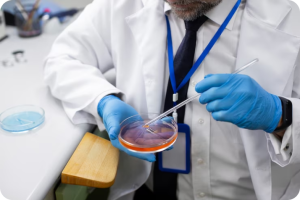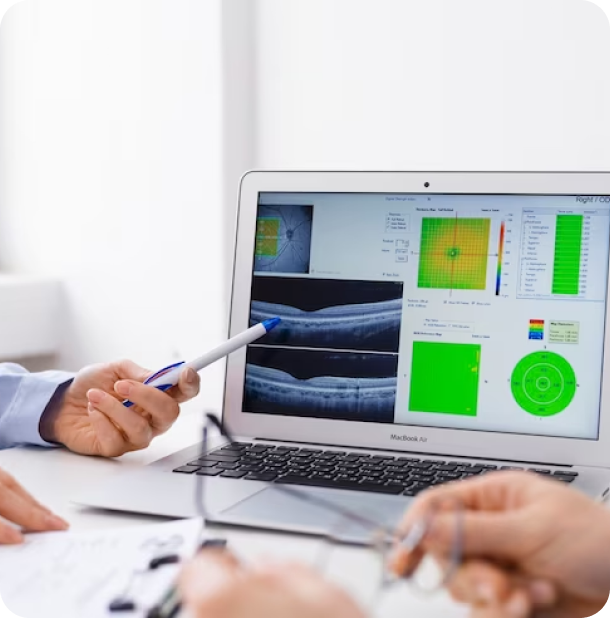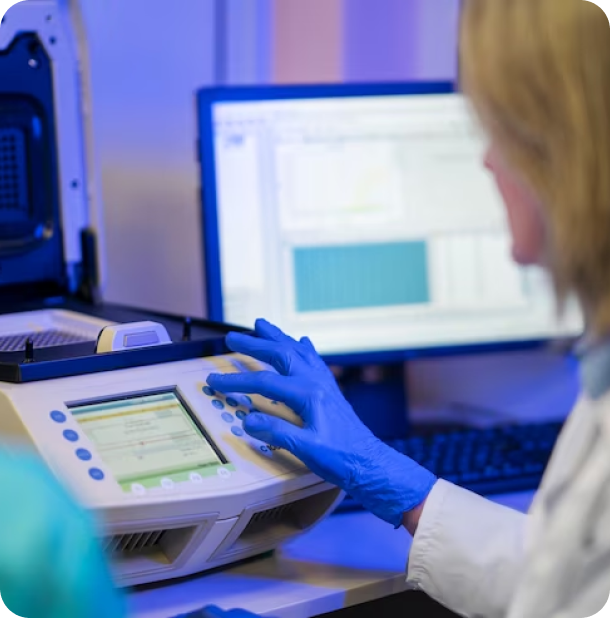Global Pathology Reporting System
PathNexia is a Global Digital Pathology Reporting System, with a vast network of expert subspecialty pathologists and an efficient online reporting system that enables the Digital Transformation of Pathology.

About Us
PathNexia is a global digital pathology reporting network that brings together sub-specialty pathologists from around the world. Pathologists at PathNexia are specifically trained in remote digital pathology reporting, allowing them to provide primary reporting services as well as second opinions. They also participate in tumor boards and multidisciplinary clinics, working closely with oncologists to aid in treatment planning.
The main goal of PathNexia is to enable pathologists to work without borders and make valuable contributions to healthcare on an international scale. By leveraging digital pathology technology, the network facilitates seamless collaboration and knowledge sharing among pathologists and oncologists globally.
Through the PathNexia platform, pathologists can access and analyze digital pathology images remotely, regardless of their physical location. This enables them to provide timely and accurate diagnostic services, reducing the need for specimen transport and improving overall efficiency in the pathology workflow.
The network also promotes the exchange of expertise and best practices among pathologists. PathNexia allows for consultations between pathologists, ensuring that difficult cases can be reviewed and discussed by multiple experts, leading to enhanced diagnostic accuracy and patient care.
By harnessing the power of technology and the expertise of pathologists worldwide, PathNexia aims to improve access to specialized pathology services and foster collaboration between pathologists and oncologists, ultimately benefiting patients globally.

Our Mission
To revolutionize the field of pathology by creating a global network of sub-specialty pathologists empowered by digital technology, enabling seamless collaboration and access to specialized diagnostic services worldwide.

Our Vision
To be the leading global platform for digital pathology reporting, facilitating borderless work among pathologists and empowering them to provide accurate primary diagnoses, valuable second opinions, and contribute to multidisciplinary healthcare teams globally, ultimately improving patient outcomes on an international scale.
Services
What We Do
Pathnexia offers a comprehensive range of services tailored to meet the diverse needs of healthcare professionals and patients globally:
01 Primary Histopathology Reporting
02 Second Opinion
03 Remote Frozen Section Reporting
04 Organizing Tumour Boards/Multidisciplinary Clinics
05 Tissue Processing Services
06 Integrated Reporting (Therapeutic Pathology)
07 Radiology and Pathology Report Correlation
08 Annotating for Artificial Intelligence Applications
09 Consultation on Whole Slide Imaging
10 Training
01 Primary Histopathology Reporting
Our team of sub-specialty pathologists provides expert primary reporting in various specialties, including breast, dermatopathology, gastrointestinal, genitourinary, renal, gynecologic, head and neck, neuropathology, bone and soft tissue, and thoracic. We ensure accurate and timely diagnoses to guide patient care.


02 Second Opinion
We offer the opportunity for pathologists and clinicians to seek second opinions from our network of experts. Our pathologists provide thorough evaluations and insights to support diagnostic decisions and treatment planning.


03 Remote Frozen Section Reporting
Pathnexia facilitates remote reporting of frozen section cases, enabling pathologists to provide real-time assessments during surgical procedures. This service promotes efficient decision-making in the operating room.


04 Organizing Tumour Boards/Multidisciplinary Clinics
Pathnexia assists in organizing and facilitating tumor boards and multidisciplinary clinics, bringing together pathologists, oncologists, and other specialists to discuss complex cases and develop comprehensive treatment plans.


05 Tissue Processing Services
In select cities, Pathnexia collaborates with network laboratories to offer tissue processing services. This ensures the proper handling and preparation of specimens for accurate diagnosis and further testing.


06 Integrated Reporting (Therapeutic Pathology)
We provide integrated reporting of histopathology, immunohistochemistry, and molecular testing. Our pathologists offer advice on reflex testing and provide treatment insights, including information about available clinical trials, to assist in personalized patient care.


07 Radiology and Pathology Report Correlation
Pathnexia emphasizes the correlation between radiology and pathology reports. By analyzing both sets of data, we strive to provide a comprehensive understanding of each case and improve diagnostic accuracy.


08 Annotating for Artificial Intelligence Applications
Our pathologists are experienced in annotating digital pathology images for artificial intelligence (AI) applications. By contributing to AI development, we aim to enhance diagnostic capabilities and improve patient care.


09 Consultation on Whole Slide Imaging
Pathnexia offers consultation services for whole slide imaging, helping institutions implement and optimize digital pathology workflows. Our experts provide guidance on technical aspects, quality assurance, and regulatory compliance.


10 Training
Pathnexia provides training programs for digital reporting and the implementation of digital pathology workflows. We aim to support pathologists in adopting and utilizing advanced technologies effectively.


Through these services, Pathnexia strives to promote collaboration, accuracy, and efficiency in pathology reporting while contributing to improved patient outcomes and global healthcare advancement.
Data Safety
At Pathnexia, we understand the importance of maintaining strict confidentiality and data protection standards in telepathology and other services we provide. We prioritize privacy and take comprehensive measures to ensure compliance with data protection and privacy legislation. Some key specifications we follow to safeguard patient data include:

Robust Confidentiality <br Standards
We have established stringent protocols and guidelines to ensure the confidentiality of patient information. Our pathologists and staff undergo training on data privacy and confidentiality, emphasizing the importance of maintaining the highest standards of professionalism and ethical conduct.

Compliance with Data Protection Legislation
We closely adhere to relevant data protection and privacy legislation applicable to the regions we operate in. This includes regulations such as the General Data Protection Regulation (GDPR) and Health Insurance Portability and Accountability Act (HIPAA), among others.

Data
Encryption
To secure data transfer, we employ encryption technologies to protect patient information during transmission. This encryption helps safeguard against unauthorized access or interception, ensuring that data remains confidential and secure.

Access Control and Authorization
Access to patient data within our systems is strictly controlled and limited to authorized personnel only. We implement strong access control measures, including unique user authentication, role-based access controls, and monitoring of system access activities.

Audit Trails and
Logging
We maintain comprehensive audit trails and logging mechanisms to track access and activity within our systems. These records assist in monitoring and investigating any potential security breaches or unauthorized access attempts.

Secure Data
Storage
Patient data is stored in secure and controlled environments, following industry best practices. We employ robust security measures to protect against unauthorized access, including physical security, firewalls, intrusion detection systems, and regular security audits.

Ongoing Security and Compliance Assessment
Pathnexia regularly assesses and updates its security practices to align with the evolving landscape of data protection and privacy. We continually review and enhance our protocols to stay at the forefront of data security best practices.

Ongoing Security and Compliance Assessment
Pathnexia regularly assesses and updates its security practices to align with the evolving landscape of data protection and privacy. We continually review and enhance our protocols to stay at the forefront of data security best practices.

Ongoing Security and Compliance Assessment
Pathnexia regularly assesses and updates its security practices to align with the evolving landscape of data protection and privacy. We continually review and enhance our protocols to stay at the forefront of data security best practices.
By adhering to these specifications and implementing rigorous data protection measures, Pathnexia maintains a secure and compliant environment to ensure the privacy and confidentiality of patient data throughout the telepathology and other services we provide.
Turnaround Time (TAT)
At Pathnexia, we understand the importance of timely and efficient diagnostic services. We strive to provide quick turnaround times for our various services, ensuring prompt access to accurate diagnoses and valuable insights. Here is an overview of the turnaround times we aim to achieve:

Primary Histopathology and Immunohistochemistry Reporting
Our expert pathologists aim to deliver primary histopathology and immunohistochemistry reports within 2-3 working days from receiving the specimen. This allows for timely diagnosis and treatment planning.

Second Opinion
For cases requiring a second opinion, we aim to provide comprehensive evaluations and reports within 3-5 days. This allows for a thorough review by our expert pathologists, contributing to informed decision-making.

Remote Frozen Section Reporting
Immediate reporting is facilitated for remote frozen section cases. This
real-time assessment during surgical procedures enables swift decision-making
in the operating room.

Organizing Tumour Boards
/Multidisciplinary Clinics
We strive to organize tumor boards and multidisciplinary clinics within 5-7 days. These collaborative meetings bring together pathologists, oncologists, and other specialists to discuss complex cases and develop comprehensive treatment plans.

Tissue Processing Services
When tissue processing services are required, we aim to complete the processing within 3-5 days. This ensures proper handling and preparation of specimens for accurate diagnosis and further testing.

Integrated Reporting (Therapeutic
Pathology)
1. For integrated reporting, including therapeutic pathology assessments,
we target a turnaround time of 5-7 working days. This includes the
analysis of histopathology, immunohistochemistry, and molecular testing,
along with treatment insights and guidance.

Radiology and Pathology Report Correlation
Our team aims to correlate radiology and pathology reports within 2-3 days. This comprehensive analysis of imaging and pathological findings enhances
diagnostic accuracy and provides a holistic understanding of each case.

Radiology and Pathology Report Correlation
Our team aims to correlate radiology and pathology reports within 2-3 days. This comprehensive analysis of imaging and pathological findings enhances
diagnostic accuracy and provides a holistic understanding of each case.
Please note that these turnaround times are indicative and may vary depending on the complexity of the case, additional testing required, and other factors. Our commitment is to provide timely and high-quality services to support healthcare professionals and patients.
PathNexia Global Pathology Reporting (GPRS) Workflow
The PathNexia Global Pathology Reporting (GPRS) Workflow revolutionizes remote pathology reporting, offering an easy and accessible solution for pathologists, no matter where they are located. With this innovative workflow, pathologists can seamlessly transition into the digital era and experience remarkable improvements in efficiency and accessibility.
The GPRS Workflow starts with effortless case accession, eliminating administrative overheads and streamlining the process. Pathologists can easily access and process cases using their existing digital pathology scanner, ensuring a smooth transition without the need for extensive equipment upgrades.
One of the significant advantages of the GPRS Workflow is its ability to accelerate turnaround time and reduce costs associated with referrals. By eliminating the need for shipping logistics and the time delays involved, pathologists can provide faster diagnostic services, leading to improved patient care. The secure digital platform ensures the safe storage and transfer of valuable specimens, giving pathologists peace of mind.


Through the GPRS Workflow, efficiency and accessibility are unlocked, empowering pathologists to deliver exceptional diagnostic services. The seamless transition into the digital pathology era allows pathologists to leverage the benefits of digital technology, such as enhanced image analysis capabilities and collaboration opportunities.
Embracing the future of digital pathology, the GPRS Workflow offers a convenient, speedy, and accurate workflow. Pathologists can experience the advantages of a digital platform, including increased efficiency, improved accessibility, and the ability to provide timely and accurate diagnoses.
With PathNexia’s GPRS Workflow, pathologists can embrace the power of digital pathology, unlocking a new era of efficient and accessible remote pathology reporting.
PathNexia histopathology on workflow using Clustr (Aindra Systems):
|
S. No
|
Step
|
Description
|
|---|---|---|
|
1
|
Use your own scanner
|
Utilize your existing digital pathology scanner to directly accession cases into the PathNexia system.
|
|
2
|
Review every case online
|
Onboard content, access diagnostics, and monitor every case at any time, from anywhere in the world.
|
|
3
|
IT & customer support
|
Reliable 24x7 IT support ensures prompt resolution of any technical issues, providing assistance when needed.
|
|
4
|
Enter Case Details into PathNexia Portal
|
Input relevant case details into the PathNexia Portal and scan/upload slides to the PathNexia Hub.
|
|
5
|
PathNexia digitally assigns cases to the best pathologist
|
PathNexia centrally assign cases to the most suitable pathologist based on expertise and sub-specialty knowledge.
|
|
6
|
Pathologist views and reviews the case on Clustr
|
Pathologist views and analyzes the case online using the Clustr platform.
|
|
7
|
Case reported and available for the client
|
Pathologist completes the report on PathNexia LIMS, and the finalized report becomes accessible to the client.
|
Please note that this is a simplified representation of the workflow and may involve additional steps or variations depending on the specific requirements and processes followed by PathNexia.
Other services have customized and efficient workflows based on client needs.
PathNexia Experts

Shefali Karve
Consultant Pathologist
Modal Title
Shefali Karve
Subspecialty
Specialty

Sharitha Naganna
Consultant pathologist
Modal Title
Sharitha Naganna
Histopathology, IHC, Hematology, Digital pathology and AI
Subspecialty
Specialty

Dr. Veena R
Consultant Pathologist
Modal Title
Dr. Veena R
Pathologist with over 22yrs of experience, Empanelled NABL assessor, Six Sigma green belt from IIT, Digital Pathology and computational pathology evangelist, Oncopathologist with primary interest in Pseudomyxoma Peritonei, with special interest in GI Pathology, Urogenital Pathology, Female reproductive system pathology,…
Subspecialty
Specialty

Dr. Diganta Hazarika
Sr. Consultant Onco-Pathologist
Modal Title
Dr. Diganta Hazarika
Highly-Experienced and Reputed Onco-Pathologist in the city of Bangalore for primary diagnosis/second opinion on Cancer. Specialised vertical in Lymphoma, Soft Tissue and Bone Tumors with the use of ancillary expanded IHC Panel and Molecular Genetic Tests. For any inquiries, I…
Subspecialty
Specialty

Mufti Suhail Sayeed
Surgical Pathologist
Modal Title
Mufti Suhail Sayeed
Subspecialty
Specialty
Our Partners



